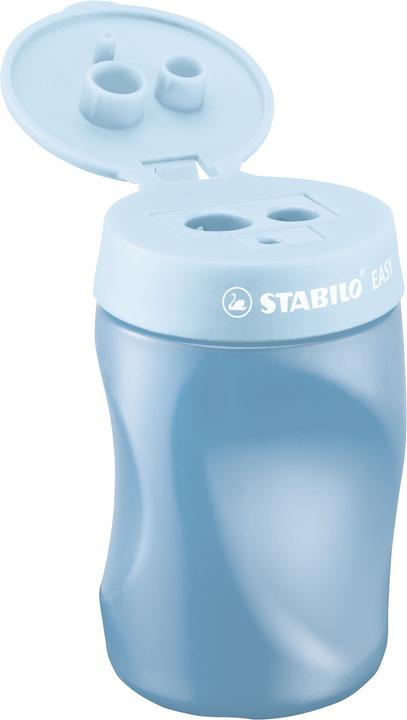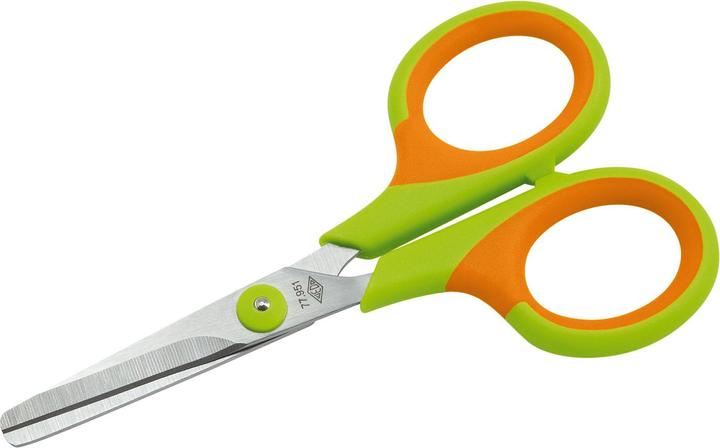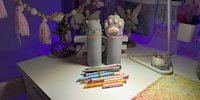
Background information
Left-hander expert: «retraining can cause concentration and memory problems»
by Martin Rupf

Left-handed children are usually no longer retrained to be right-handed. But how are prospective teachers taught to deal with the needs of left-handed students? And where can educators even find supplies for left-handed children?
Around ten to 20 per cent of the population are left-handed. According to Barbara Sattler, who’s an expert on left-handedness, the number is likely to be even higher. In a recent interview, she explained why left-handed children should never be retrained to be right-handed: «It’s tantamount to brain surgery.»
That begs the question, to what extent is left-handedness taken into consideration in Swiss schools? When asked, the Swiss Teachers’ Association (LCH) simply states: «The LCH considers inclusive schools to be where the individual needs of each student are taken into account.» That’s all well and good, but rather vague.
I wanted to find out more so I contacted Susanne Steiger. She was trained as a physical education teacher and psychomotor therapist, works at the Zurich University of Teacher Education in the Department of Movement and Sport, and trains prospective teachers in graphomotor skills and the didactics of writing. She explained: «Because a child’s handedness should ideally be determined by the time they start first grade, we instruct prospective kindergarten and elementary school educators on left-handedness. This includes helping children when they’re first learning how to write and engage in fine motor activities such as cutting and doing crafts.
«Basically, children should decide for themselves whether they are right- or left-handed. Under no circumstances should a kindergarten teacher influence this decision. Doing so would be equivalent to changing that child’s personality,» stated Steiger. It’s really more about observing the child attentively and, if there are signs of difficulties with dexterity, discussing the issue with the parents and getting the opinions of specialists like a psychomotor therapist or an occupational therapist.
«The movement involved in writing is much more challenging for left-handed children because their strokes are made while pushing the instrument forward rather than pulling it from behind. If these children are in an environment responsive to their handedness, they shouldn’t be disadvantaged at school,» stated Steiger. So a right-handed teacher would need to know how to properly hold a pencil or scissors for a left-handed child. «Conversely, of course, a left-handed teacher needs to be able to demonstrate certain things like writing or cutting to a right-handed child.»
It’s often small things that help a left-handed child. «For example, sitting on the far left of the desk or next to another left-handed child so that they don’t get in each other’s way when working,» said Steiger. It’s very important to involve the parents in the process but also specialists if the child is experiencing difficulties. Left-handed or not, it’s ultimately a matter of responding to the individual needs of each child. «In this respect, Swiss schools have undergone a fundamental change. Look at traditional Swiss cursive handwriting which has been replaced by a more modern «Deutschschweizer» script, giving kids much more freedom to develop their own writing.»
In the new teaching programme «Deutsch», the needs of right- and left-handed children are addressed in the chapter on learning to write. «The letters and sentences that the children are to copy are also shown on the right side of the page so that they’re not covered up by the left hand.» For Susanne Steiger, it’s clear that every classroom should have a basic stock of left-handed materials such as left-handed pencils, rulers, sharpeners and scissors.
And of course the same is true at home. If you think your child might be left-handed and confirm this with a specialist, it makes sense to get some basic left-handed materials for home. We offer a large selection of pencils, scissors and sharpeners for left-handers on our online shop.

STABILO EASYsharpener can sharpener for left-handers


But the obstacles of everyday life for left-handers often go far beyond writing and arts and crafts. Many activities that are easy to do as a right-hander are challenging as a left-hander. A classic problem is opening a can with a can opener.
Because finding left-handed tools is not always that easy, husband and wife André and Sabine Nisple opened the first pure online left-handed store four years ago. «My wife is left-handed. When we visited the first left-handed store in San Francisco on our honeymoon some 30 years ago, there were just three or four products. It was a huge disappointment,» says André. Out of about 30 different types of scissors at the major retailers, there are very few for left-handers. «The product range is far too small.»
André proudly mentions the can opener, boomerang and hand scythe that he and his wife have in their assortment of products. Though they started with 150 products, they already have over 600 today. They acquire their stock through dealers worldwide who also specialise in products for left-handers. But because even these dealers don’t carry all the products that are sought after, the couple has begun producing their own. One example – pinking shears. André says, «We keep getting requests. Like the other day when someone asked about a hand fan for left-handers.» This example shows there’s still a lot of room for improvement when it comes to everyday objects for left-handers.
Image: Shutterstock
Half-Danish dad of two and third child of the family, mushroom picker, angler, dedicated public viewer and world champion of putting my foot in it.
Interesting facts about products, behind-the-scenes looks at manufacturers and deep-dives on interesting people.
Show all
Background information
by Martin Rupf

Background information
by Patrick Vogt

Background information
by Michael Restin